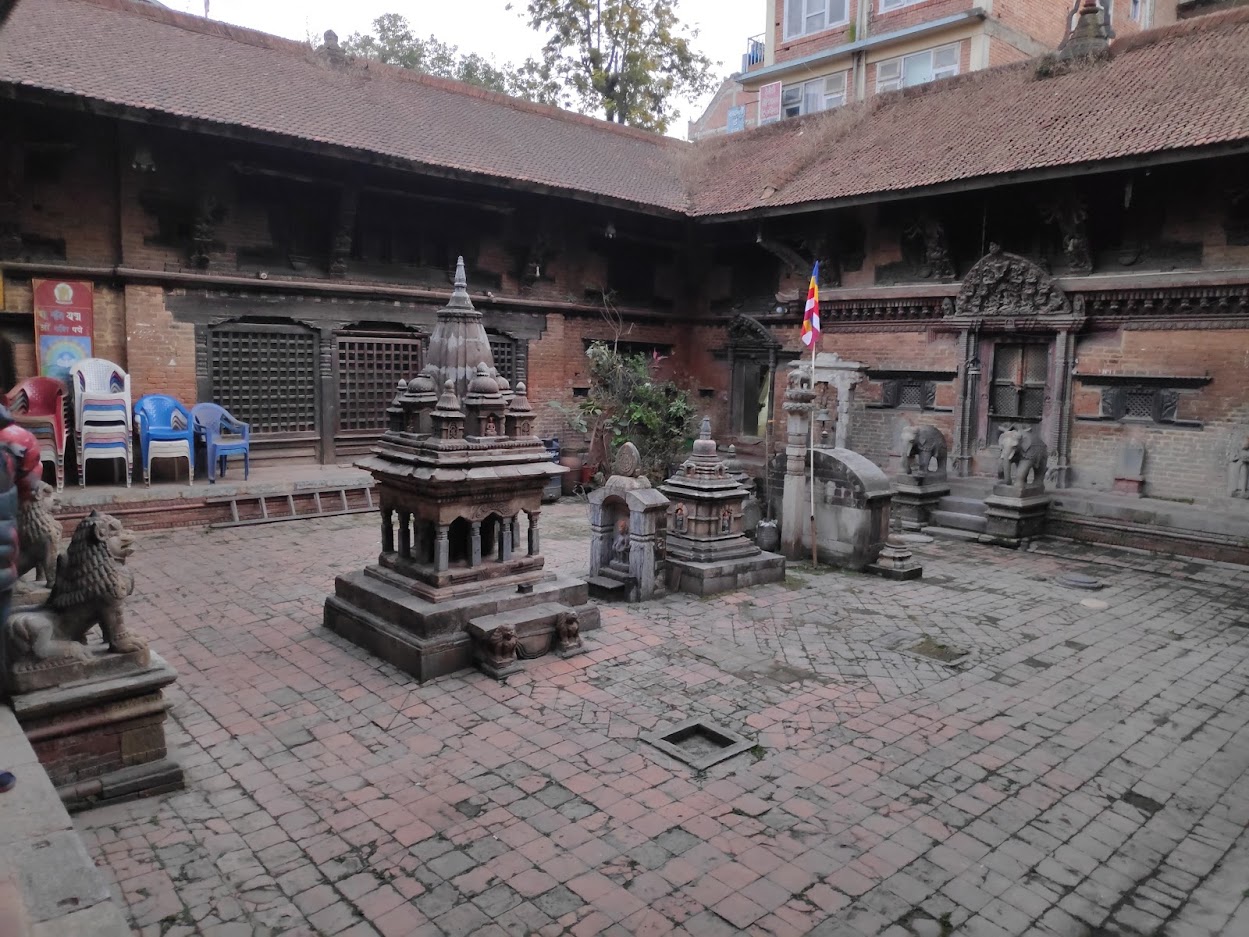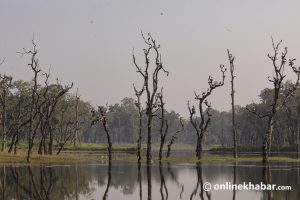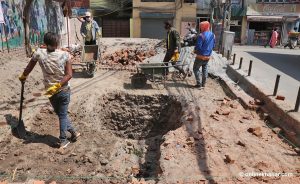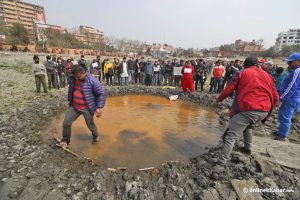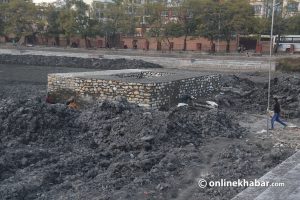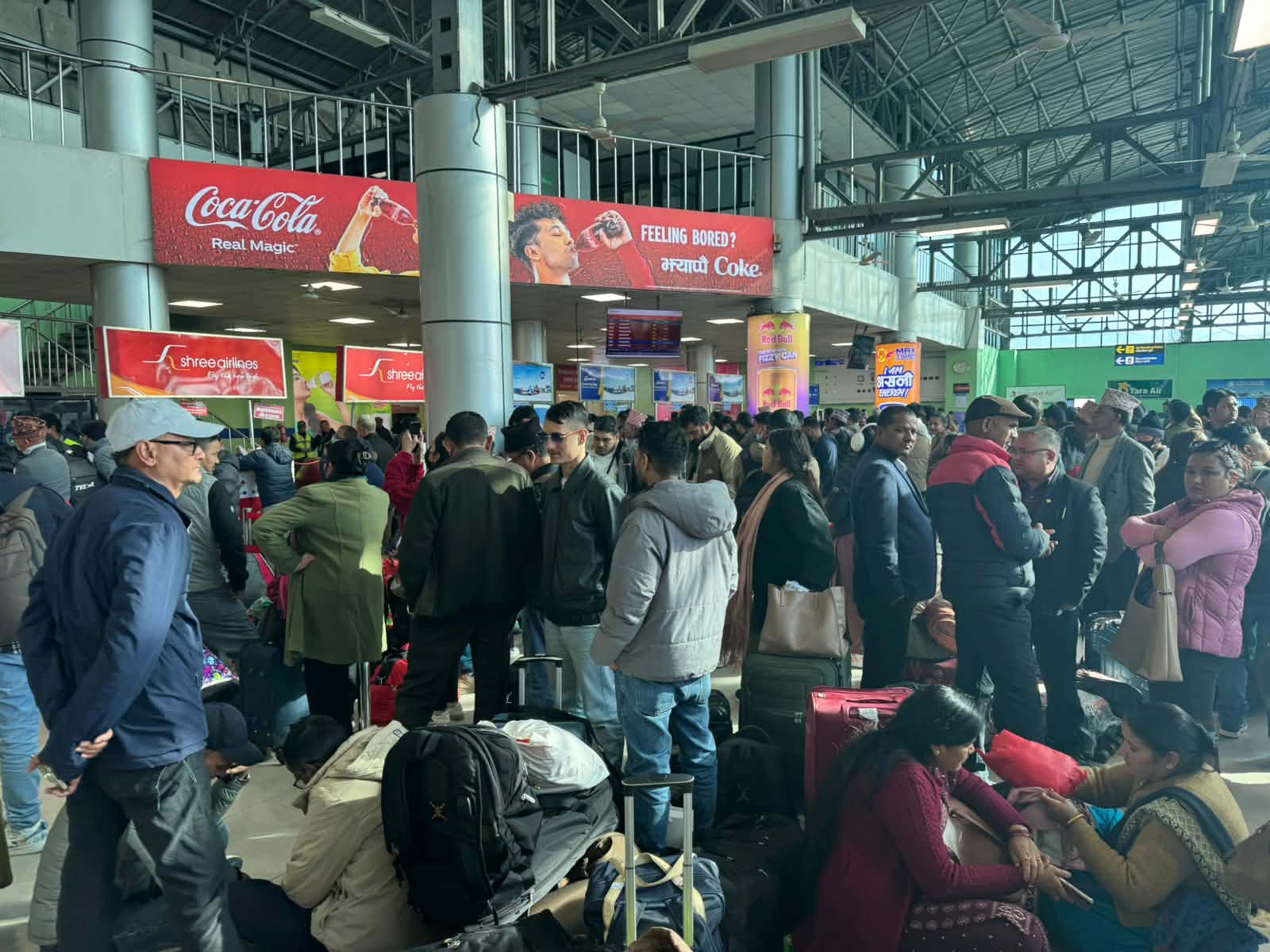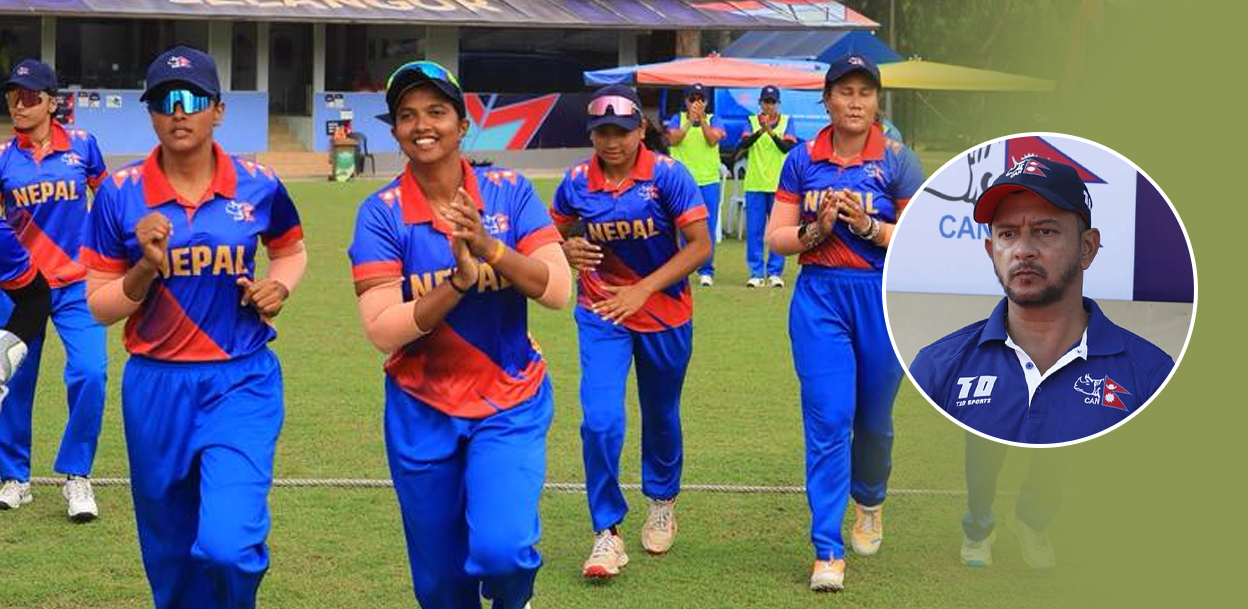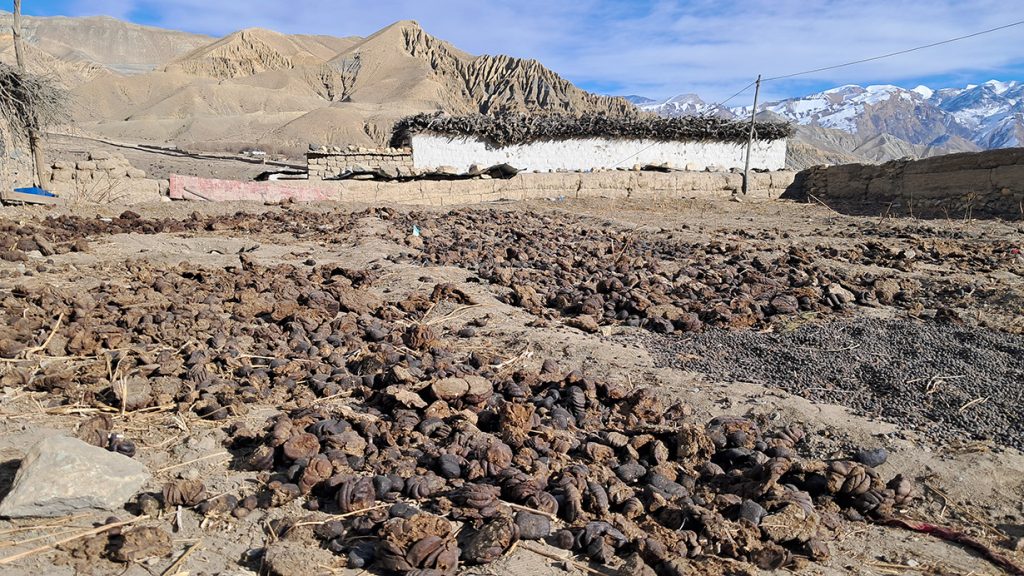The Kathmandu metropolitan city has time again been accused of being insensitive towards conserving the city’s cultural heritage.
Over the course of the decade, the city government has helped businesses encroach heritage sites all across the city. Civil Mall and Chhaya Centre were built where there were ponds previously. Likewise, the local government did not say anything when Maharjan Complex was being built without following rules nor did it say anything to people using concrete during restoration and reconstruction of the Swayambunath stupa.
While these are still fresh, the Kathmandu metropolitan city is on the news again as this time it has approved the building of a commercial complex in Jyatha on the property that locals believe belongs to Gunakar Mahavira or Chusya Baha. Conservationists and locals say there was a historical phalcha and a lachhi, a resting place and an open space respectively, like the Samay Phalcha in the past, and they had called the city government to restore this.
Historicity of the place
“The local ward says they want to build their office here,” says heritage activist Alok Siddhi Tuladhar. “But what they really want is to use this land and build a commercial complex that will have shops, a party venue and a local club.”
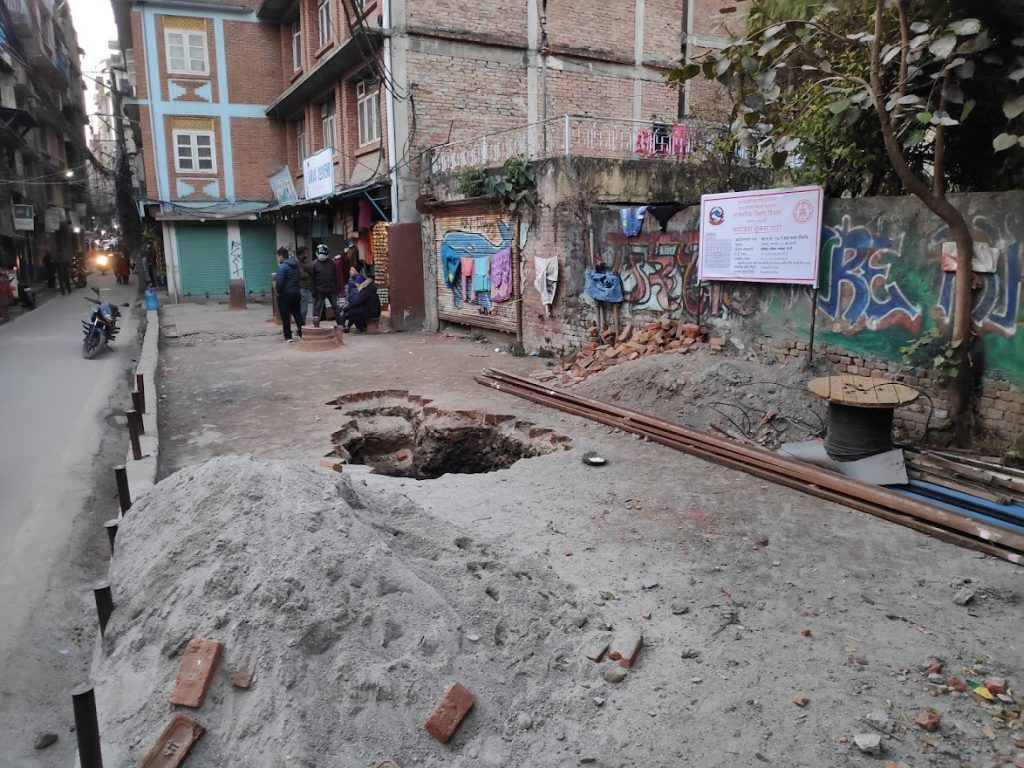
The place, according to locals, used to house an old phalcha, a resting place for locals, and a lachhi, an open space, next to the phalcha. The open space was mostly used during Upakoo, a ritual in which the locals of the city take a round of the old Kathmandu during Indra Jatra.
“The procession still goes through this space. It is insensitive of the ward to be doing this,” he says.
What has irked the locals and heritage activists is the phalcha and lachhi that stood there until a century ago was a part of the baha. Even though the Jyatha Community Club says that the land belongs to it, locals say that an inscription on the baha states otherwise.
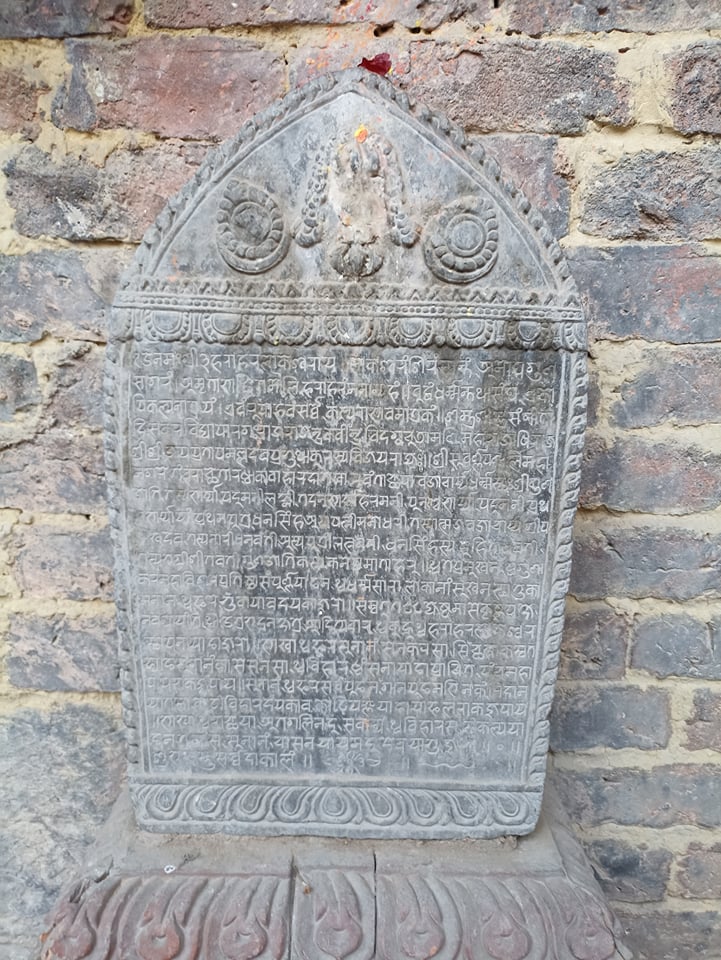
Siddhi Ratna Shakya, an inscription expert who previously worked at the Department of Archeology, says the stone inscription of 788 Nepal Sambat (1667 CE) present at the baha says that lachhi space is bestowed to the vihara by one Gunajyoti Bajracharya, the founder of Gunakar Mahavira.
“This inscription is over 300 years old. This is something that has always belonged to the baha. I don’t know how someone else claimed that it is theirs,” says Shakya.
The city’s defence
But, the official document says otherwise. According to Kathmandu metropolitan city’s ward 27 committee, the land belongs to the Jyatha Community Club and Bauddhik Bikas School. Ward chair Chiniya Man Bajracharya says that the activists and locals cannot be serious in their arguments. He says they have stronger documents as evidence compared to the activists.
“There is a road in between and they don’t have an official land ownership document,” says Bajracharya. “I think they are overreacting.”
He says that the ward helped renovate the baha and even now, it offers Rs 400,000 on a yearly basis. He claims that the maintenance of the baha will be better if the ward office was set up there.
“We don’t want to give anyone problems. As the ward, we don’t have a building and this will be beneficial for everyone in the community,” he says.
But, heritage activists think otherwise. They say that since the inscription has made it clear, they feel that the present land ownership certificate needs to be invalidated.
“We have another proof. The place used to have an old chaitya, the Mahavairochana. The chyaita was where they are doing the construction. Because it was on the road, it was shifted inside Chusya Baha,” says Shakya.
The federal government’s interference
The locals even wrote to the ward office and the Kathmandu metropolitan city, but they did not reply. After that, they even wrote to the Department of Archeology under the federal government. Acknowledging its concern, the department on February 10 wrote to the ward stating that the baha was an area of cultural importance, asking for the halt in the construction until further notice.
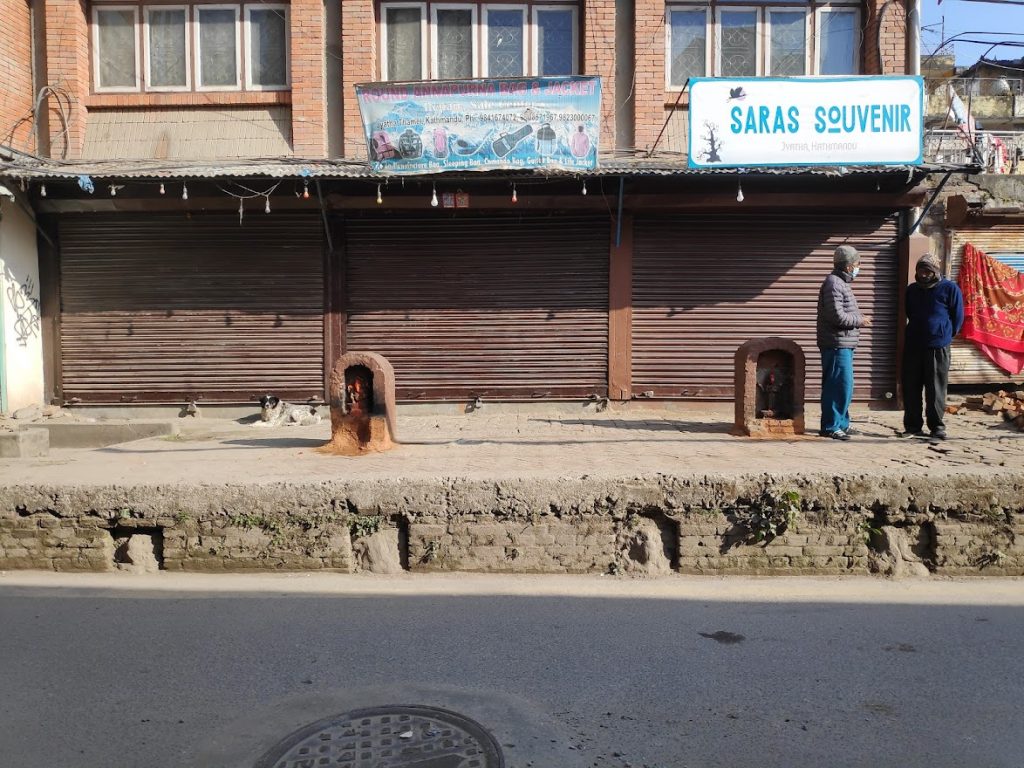
For now, the ward says it will halt the construction but adds that it needs proof that the phalcha and the lachho were actually there.
“We have no proof so far. If anyone comes and gives us proof that there was a phalcha and a lacchi, we’ll rebuild it there. We can’t just go by a 300-year-old inscription,” says Bajhracharya.
The locals and activists argue that the ward should also show them the real land ownership certificate. Activists say that the column where the owner’s name is recorded is empty. In the government records, it says “Mahal Khali” in that column (meaning no specific user).
“So the lalpurja (the land document) they claim to have is dubious. They didn’t give it to us. In fact, the ward office didn’t even register our application. So we need to file a right-to-information application now to see if the lalpurja actually exists. We suspect fraud,” says Tuladhar.



